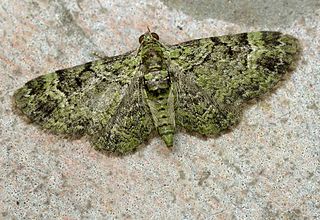
The green pug is a moth of the family Geometridae. It is sometimes placed in the genus Chloroclystis or Rhinoprora. It is common throughout the Palearctic region and the Near East, but also appears in North America.
Aracima is a monotypic moth genus in the family Geometridae. Its only species, Aracima muscosa, is found in Primorye, Amur, Sakhalin, China, Korea and Japan. Both the genus and species were first described by Arthur Gardiner Butler in 1878.
Pachista is a genus of moths in the family Geometridae described by Prout in 1912. It consists of only one species, Pachista superans, first described by Arthur Gardiner Butler in 1878, which is found in China, Japan and Korea.
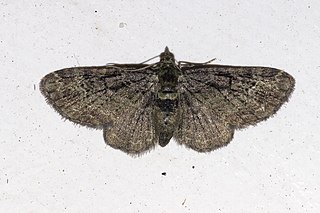
Pasiphila is a genus of moths in the family Geometridae. As of 2005 about 36 species were known, and of these, some 27 are native to New Zealand.

Pasiphila debiliata, the bilberry pug, is a moth of the family Geometridae. It is found from Europe, east to southern Siberia, the Amur region and Japan.

Eupitheciini is a tribe of geometer moths under subfamily Larentiinae, often referred to as pugs. The tribe was described by Tutt in 1896.
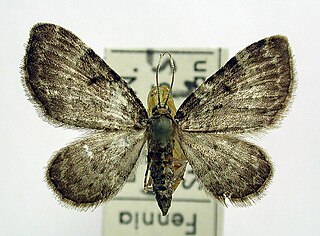
Pasiphila chloerata, the sloe pug, is a moth in the family Geometridae. It is found from Europe to the Amur Region and central Asia.
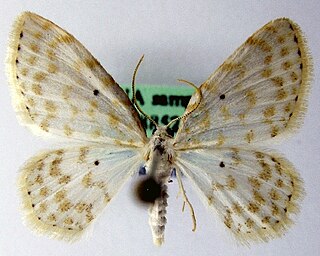
Asthena anseraria is a moth of the family Geometridae. It is known from most of Europe, east to Korea.
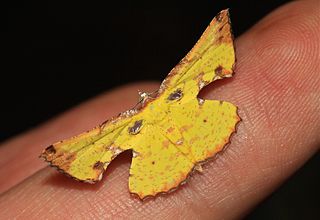
Corymica pryeri is a species of moth of the family Geometridae first described by Arthur Gardiner Butler in 1878. It is found in Japan, Taiwan, the north-eastern Himalayas, Sumatra, Borneo, New Guinea and possibly Queensland, Australia.
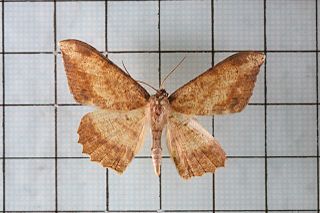
Luxiaria amasa is a moth in the family Geometridae first described by Arthur Gardiner Butler in 1878. It is found from south-eastern Siberia to Korea, Japan, northern India, Nepal, Taiwan, Borneo, Sumatra, Java and Sulawesi.

Pasiphila derasata is a species of moth in the family Geometridae. It is found in Africa, south of the Sahara, including the Islands of the Atlantic Ocean and the island of the Indian Ocean.
Dindica virescens is a moth of the family Geometridae first described by Arthur Gardiner Butler in 1878. It is found in Japan.
Eupithecia proterva is a moth in the family Geometridae. It is found in Russia, Japan, Taiwan and Korea.
Eupithecia sophia is a moth in the family Geometridae first described by Arthur Gardiner Butler in 1878. It is found on the Kuriles, in Japan, Korea and western China.
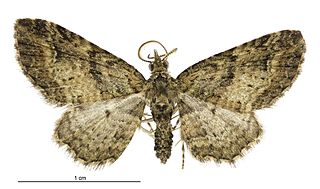
Pasiphila charybdis is a species of moth in the family Geometridae. It is endemic to New Zealand. This species was first described by Arthur Gardiner Butler in 1879.
Pasiphila obscura is a moth in the family Geometridae. It is found in Japan and Russia.
Pasiphila kumakurai is a moth in the family Geometridae. It is found in Japan.
Pasiphila subcinctata is a moth in the family Geometridae. It is found in the Russian Far East, Korea and Japan.
Macrohastina azela is a moth in the family Geometridae first described by Arthur Gardiner Butler in 1878. It is found in Japan.
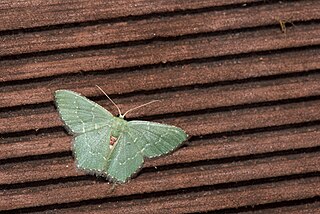
Hemithea marina is a moth of the family Geometridae first described by Arthur Gardiner Butler in 1878. It is found in the Indian subregion, Sri Lanka to Japan, Sundaland, Taiwan, Sulawesi and Seram.










